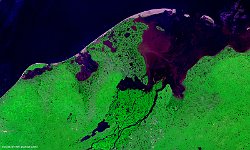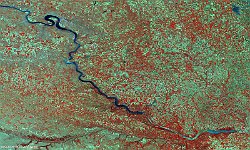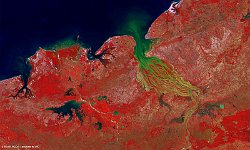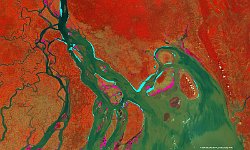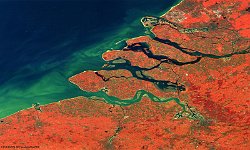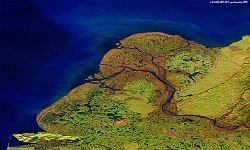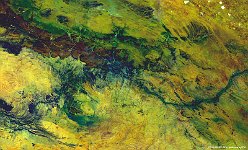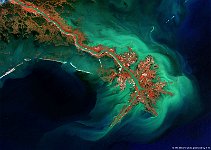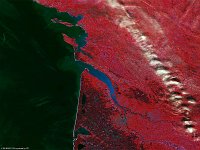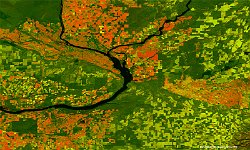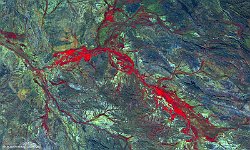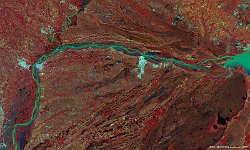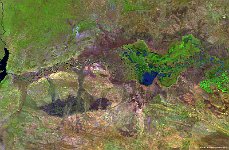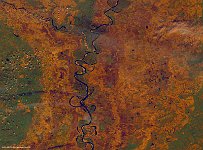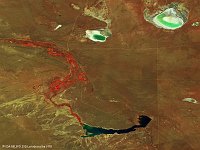19 / 62
Yukon Delta, Alaska
Along the west coast of the US state of Alaska, in a tundra landscape that can be navigated by bush planes or boats in Summer and snow mobiles or sleds in Winter, PROBA-V spots the last part of the 3,190 km long Yukon River, emptying out into the Bering Sea.
Originating in British Columbia, Canada where it further flows through a namesake territory. The Yukon River was the primary means of transportation for gold seekers and explorers at the end of the 19th and early 20th century. Today, it is the northern edge of the protected Yukon Delta Wildlife Refuge that includes extensive wetlands and is frequently inundated by the Bering Sea tides.
The name Yukon is blended from a phrase in the indigenous language that can be translated as white water river, referring to the visual effect of glacial silt.
Date: 15/10/2016
Resolution: 100m
